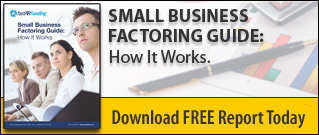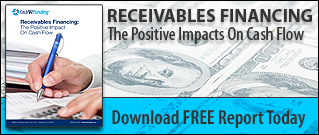 One of the biggest struggles that any business faces is managing cash flow. Even businesses that are profitable on paper can have difficulties finding the cash to pay a critical vendor or make payroll on Friday.
One of the biggest struggles that any business faces is managing cash flow. Even businesses that are profitable on paper can have difficulties finding the cash to pay a critical vendor or make payroll on Friday.
One of the best ways to address this issue is with cash flow financing. It is a simple, cost-effective way of closing something called the cash flow gap.
What is this cash flow gap and why does it matter?
Difference Between Cash Flow and Profit
Before I talk about the cash flow gap, you need to make sure you have a handle on what cash flow actually is and how you to manage it.
Managing your cash flow is not as simple as keeping tabs on your profit and loss statement. There are many factors that affect cash flow that never touch the P&L. Your profit and loss statement simply shows the revenue your business generated minus the expenses your business incurred. It doesn’t tell you what happened to your cash.
There’s an old saying, “Revenue is vanity, margin is sanity and cash is king.”
Your business might be very profitable on paper and your margins look great, but you can still go bankrupt because you don’t have the cash to pay the bills.
Below is an example of the cash cycle of many businesses.

Cash goes out the door when materials are purchased, but those goods have to go through production, inventory, sales, receivables and then collections before you will see that cash again. Depending on how long each of those steps takes, it could be 180 days or more before you see your cash again. This is called the cash flow gap.
Do you have enough cash on hand to keep your company running for six months?
Closing the Cash Flow Gap With Small Business Factoring
A huge cash flow gap is not an unusual problem. In fact, nearly all companies struggle with this. One of the best ways to close the cash flow gap is with cash flow financing. Cash flow financing lets you get cash quickly, allowing you to focus on your business operations. There are many different kinds of cash flow financing, but the simplest and most cost-effective form is factoring.
1. Get cash for your invoices
In this form of financing, the finance company (called the factor) purchases your invoices and then collects payment from your customers when the invoice comes due. That means you get cash as soon as you invoice. You aren’t waiting 30, 60 or 90 days for your customers to pay. It eliminates the biggest part of the cash flow gap.
2. Spend less time collecting money
In addition to giving you cash quickly, it eases the burden of collections. When you are a small business, you don’t have a dedicated collections department. Any time spent on collections is time taken away from another vital task.
3. Reduce risk
A company that specializes in small business factoring also helps you identify high-risk accounts. As a small business you don’t have time to do extensive risk analysis on your customers. Many times you don’t know an account is bad until it is too late.
When looking for a factor, it is important to find a company that specializes in small business factoring. They understand the special challenges that small businesses face. They also get you cash quickly – usually within 24 to 48 hours.
If there always seems to be too much month left at the end of the money, cash flow financing is a great solution to close the cash flow gap and lets you focus on the things that keep your business moving and growing.
Learn more about factoring and Fast A/R Funding’s services by downloading our informative “Factoring 101” guide, or call 888.833.2286 to speak with one of our small business finance consultants.










